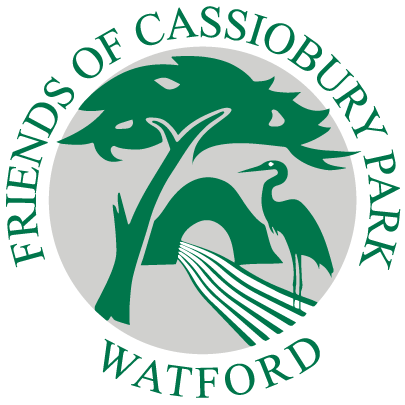Nature Blog
This an example – FoCP members receive a Quarterly E-Magazine (Park Life) that includes this blog – so please join up to keep in closer touch with what’s going on with wild things in the park.
Big Garden Bird Watch!
In winter it is sometimes easier to stay at home to practise one’s hobby and what could be more tempting than to do the RSPB’s ‘Big Garden Bird Watch’ which takes place the last weekend in January? The charity also encourages submissions from birders spending an hour watching their local park, but I think that by having such a wonderful park with so many trees and an LNR, with a river and canal passing through it, the range of species would be rather wide and atypical! That’s my excuse for staying in the warm house and just watching for one hour from the kitchen window – anyway, having a suburban ‘wildlife’ garden so close to the park, I know that all the species I see will also be ones found in the park. I usually start by making sure all the feeders are well stocked at least two days in advance and there is plenty on the bird tables, this gets the birds into the feeding habit in time to boost my results, as well as sustaining them through the cold weather. These are difficult economic times so maybe my feed mix this year is somewhat higher on the grains than the luxury sunflower seeds, attracting more collared doves, woodpigeons and squirrels.
The next issue is timing – when to start? Everyone hopes that as well as the ‘regulars’ they might also get something just a bit special! So when on Saturday 28th, a small ‘charm’ of goldfinches settled into the top of a silver birch I started to record numbers – being careful not to count the same birds twice. There were three redwings, still raiding the holly berries, and pairs of robins, blue tits and blackbirds as well as the collared doves and woodpigeons but that was all – just seven species! Finding myself on food prep again in the afternoon I decided to try a re-count. This time the redwing tally went up to five and a pair of magpies bossed their way around the garden to add to all the regulars. Two mysterious solitary birds were sitting alone in a tall cherry tree, requiring the binoculars to get a positive ID; one resolved into a song thrush and the other was a female redpoll. (This was unusual by not being in a flock.) A very small, roundish bird was working its way around the branches of a closer cherry tree, searching for insects. I was delighted to see that it had a yellow streak down the head confirming that it was a male goldcrest – the smallest British species, often found in conifer trees. I chose to submit my afternoon results with18 birds from ten species Next day there was also a pair of great tits and a small flock of long-tailed tits busy on the peanut feeders, a robin and a blackbird disappearing into the ivy- covered pillars, and blue tits going into the bird box. All this breeding behaviour, pairing up and searching for nest sites, is indicating a very early start to spring. If you do not have a garden then think about going down to the bird hide by the canal where the feeder is kept full and grain is scattered on the ground. It is very entertaining with chaffinches, jays, crows, great spotted woodpeckers, nuthatches and moorhens joining the usual suspects.
The South East has been lucky to escape snow so far this year and plants are also developing well ahead of time. Hazel catkins are already swinging in the breeze. Bluebell leaves are pushing through, also daffodils and crocuses. I have polyanthus and native primroses in flower in the garden – I associate the latter with Cornwall in April! Bridget, out walking in the park with Anne Sheppard has noticed pink buds about to open on the small scarlet maple trees just down from the Stratford Way entrance. The buds will open into dense clusters of flowers, on the leafless trees, giving a red ‘glow’. Anne’s photograph was taken much later than this last year.
Elizabeth Gower January 29th 2012
